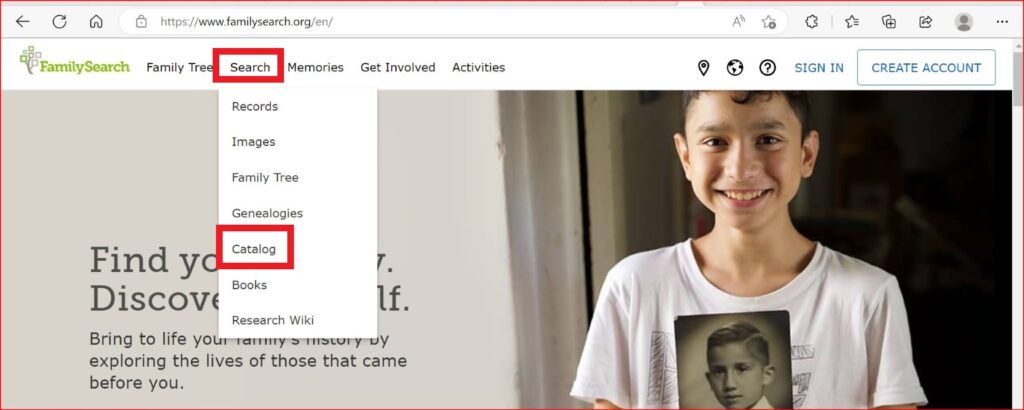Has this ever happened to you, where, based on the evidence, you think you have something spelled correctly, but it ends up being wrong. This happened to me recently and, if you know me, I had to go the extra mile to get my result. My result surprised me.
Let me tell you about it so when you encounter something like this you too can step back, research or study your problem fully.
Helping my Friend
Now that my tree is established and over 26,000 people, I now have extra time to help friends, family and my readers (Feel free to message me!). I love helping people and I always appreciate the opportunity to improve my sleuthing skills.
In a recent post: Ancestry Companies don’t Make it Easy to Transfer Trees, you met my friend Leonard and the problem we were having copying his complete tree. Now that we have his free Ancestry tree up and running, we have combined forces to work on his tree, for which he has made me editor. Once again, we encountered something unusual.
FamilySearch
Now, my typical routine is to first learn about the subject on FamilySearch Research Wiki and then either click on some of their links to start researching or go directly to the FamilySearch Catalog – easy to locate on FamilySearch. In order to view any records, you will need to create your free FamilySearch account, which you can click here to go to the post.
Parish Records
I was so pleased to find Belgian records in the catalog on FamilySearch. For this case, the parish records. In this particular research, I was in the 1600’s. When you go back that far, you will understand that the script people write in is very different from modern style; on top of that, it was in Dutch and maybe Latin, which I might be able to pick out words, but am not proficient in either language. That’s where Leonard comes in, he is sometimes my eyes as it is his language, but with this record, even Leonard was not much help due to the document’s age.
Not only did these Belgian records have the parish records, they also included a separate index that was transcribed years later.
The index helped tremendously as it gave the page number for where to find the record. I know my readers are probably wondering what the problem was, as I had already an index and could find what I was looking for on the pages that the index said.
Spelling Problem
Well, I thought I was doing great, as what was transcribed seemed plausible enough, so I didn’t question it until I contacted another tree on Ancestry® to say they had the surname spelled incorrectly. Well, this tree owner, I call him Sam, said he was from Belgium and that he had 20 years experience with Belgian parish records and paleography. He told me that the index had been done years after the initial record and there were many errors. At the time, we amicably agreed to disagree until further research.
Sam told me he would ask his Facebook group to transcribe the surname. Meanwhile, I went to see if I could get some clarification on the surname as well. I join the Belgium group on FamilySearch and posed my question, with unfortunately no response. In the meantime, Sam let me know that his survey all agreed on the way he’d spelled the name. His group was a Belgium genealogy group. After learning this, I decided I needed to do an in-depth study on Dutch “C” and “R”, so I could understand why they went against the index.
In-depth Study
Mind you, I am self-taught without a formal degree. For my study, I went back to the index and looked only at the surnames that started with a “C” or “R”. The names also had to be around the same years as my questionable surname, with the same entry handwriting. Each time I found one, I would take snips and mark it with the names from the index and then compare the writing against my handwriting samples I printed off the internet for the Dutch lettering for that time period.
When I completed my study, I emailed it to Leonard with my findings. He was impressed, although couldn’t figure out why I put my time and energy into his tree instead of more important matters. (Silly Leonard, the sleuthing IS the important matter!)
My Findings
My findings are based on how I set-up my study, which goes against what the original transcribed index said. This is one such error and since then I discovered more. What made my final decision? It came down to the stroke. By looking at all the examples of ‘c’s’ and ‘r’s’, there was only one similar stroke that could be either letter, but even then, the “c” was not straight but curved as opposed to the “r” being straighter but not curved. The letter in the original document was definitely a “C”, which is not what the Index had.
We attached my study document to Leonard’s ancestor to help us remember and so others could see why we have her maiden name not like the index; also, we have it in her “As Known by” facts and added it in the notes tab on her page.


Extra Mile
By going the extra mile and doing more research, I got unusual results that were certainly not what I was expecting. This research should have proved that the index was correct and the person I contacted about the so-called “wrong spelling” was incorrect, but they ended up being right. It just goes to show that what things seem to be are not always the case. Always make sure to do your research and be courteous when contacting another tree. Afterwards, I asked Sam some other questions and he was very helpful and gave us more leads for sleuthing.
Unfortunately, the leads require visiting the local Belgian archives, which is a little hard when I live across the pond in the U.S. and my friend Leonard does not have the time to work on it right now. So, while we completed his surname puzzle, another puzzle piece goes on the backburner.
In the meantime though, I am available for another case. (Hint, hint to my readers!)





Leonard concurs; you going the extra mile did reveal very interesting information, thanks for your hard work!